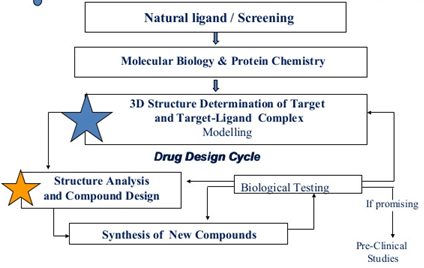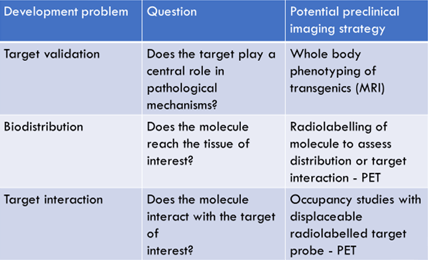Information technology – Drug Development
- application of computers and telecommunications equipment to store, retrieve, transmit and manipulate data
- The automation of all the manual work of the Pharmaceutical industry is based on the principles of IT systems
- There are many different automated softwares that aid the smooth functioning of pharmaceutical units and improve efficiency, accuracy and decision making
- Drug discovery à long process starting with the target identification, validation and lead optimization. This is followed by the preclinical trials, intensive clinical trials and eventually post marketing vigilance for drug safety.
- preclinical and clinical investigations conducted are often slow, expensive, and risky process and take about 15 years to introduce a compound on the shelf of the market.
- Hence, an effective and innovative approach is required to predict the drug efficacy, thereby strengthening the success of drug development process.
- IT can improve drug discovery with efficient statistical algorithms, rationale approaches for target identification, validation, and optimization.
Screening & Pre-clinical drug development
Molecular Docking
- Docking is a method which predicts the preferred orientation of one ligand when bound in an active site to form a stable complex


- Structure based drug design – application
- compound discovered using the elements of 3D structure and Structure Activity Relationship (SAR)
protease inhibitors à • Ritonavir • Saquinavir • Indinavir
High throughput screening
- Computational methods are used for the prediction of drug-likeness which means the identification and elimination of candidate molecules that are unlikely to survive the later stages of discovery and development.
- tool for early-stage drug discovery
- an optimised, miniaturised assay format that enables the testing of >100,000 chemically diverse compounds
- Hit: a molecule with confirmed concentration-dependent activity in a screen, and known chemical structure.
- Lead: a compound with potential (as measured by potency, selectivity, physico-chemical properties, absence of toxicity or novelty) to progress to a full drug development programme
- When a target is identified, a decision has to be made about which chemicals to screen, in order to identify potential lead compounds
- Random screening : All possible drug molecules screened against target. This is simply not possible.
- Focussed screening : A limited number of compounds are pre-selected for screening. Has proved successful as a hit generation strategy. Useful when 3D structure of target is known (e.g. crystal structure of a receptor
- most drug discovery labs à library collection of 400,000 to 1 million or more compounds.
- Primary screen is designed to rapidly identify hits from compound libraries
- Primary screens are run in multiplets of single compound concentrations. Hits are then retested, usually independently from the first assay.
- If a compound exhibits the same activity, it is coined as confirmed hit, which proceeds to secondary screens or lead optimization
- Primary screen is designed to rapidly identify hits from compound libraries
- allows potential drugs to be quickly and efficiently screened to find candidates that should be explored in more detail
- Disadvantage- Need for relatively pure products à High cost
- Advantage – Many types of in vitro assays can be readily converted to HTS.
Screening drug for genetic disorders
- Bioinformatics technology allows researchers to analyze the tetra bytes of data produced by the Human Genome Project.
- Gene sequence databases, gene expression databases, protein sequence databases, and related analysis tools all help to determine whether and how a particular molecule is directly involved in a disease process and in turn helps find new and better drug targets.
Pharmacometrics
Science of developing and applying mathematical and statistical methods to:
- a. Characterize, understand and predict a drug’s pharmacokinetic and pharmacodynamic behavior
- b. Quantify uncertainty of information about that behavior
- c. Rationalize data-driven decision making in the drug development process & pharmacotherapy
PK/PD modeling – application
- PK/PD assists in identification of appropriate animal model, later in Phase I they assist in PK, safety and tolerability of drug candidate
- Example – How PK/PD model helps in dose selection for clinical trial
- The researchers are developing a new drug, during research they have collected lot of data …during early phase of development and now have a whole pile of data to work with
- But it is still challenging for the researchers why some pt respond differently to others
- PK – what body does to the drug, PD – what the drug does to the body. This much we already know but how this will help to answer the researchers question
- Pt. are individual with diff characteristicsà so even though they get the same dose, the drug conc. Will vary à body weight, gender, age, drug interactions, metabolism, à reason for PK variability
- The pharmacologist uses a PK model together with the collected data to quantify PK variability
- Patient suffering from the same disease may respond diff. to the drug conc.
- Drug acts on the target à which maybe receptor or enzyme, diff. factors such as no. of receptors, the time span in which receptors regenerate themselves or their diff. functionality à reasons for PD variability
- PK/PD model à helps to understand how drug effects relates to conc. How these effects change over time. à gives insight to source of inter patient variability
- PK/PD model – tells about drug conc and drug effect over time for every pt. à thus helps in dose selection, the dosing interval and dose adjustment decisions across phases of clinical development.
- Optimizing drug effect to suitable dosing regimen à defining right dose for every pt.
In vivo imaging
- Can contributes to translational strategies able to both enhance confidence in decision-making and accelerate clinical development

Animal Simulator
- Two softwares are currently used in India
- Expharm- developed by JIPMER, India
- X-cology
- Screen interactive interface to study the effects of various drugs on the isolated tissues
Clinical drug development
EC submission software – e.g. e-EC software
- FERCI along with PATH created a e-software for ethics committee functioning and submission
- 12 Ethics committees in India and 4 abroad are using this e-software
- Log-in facility for each stakeholder- Investigator, Members, chairperson, Member Secretary, Administrative staff
- Submission of a new project, responses to EC queries and amendments by investigator, protocol deviation, SAE, annual updates, termination and completion of study
- Online review and uploading of comments by IEC members
- Checking completeness of submission, tracking timelines and coordinating correspondence among all stakeholders by administrative staff
e-Consent form
- If the participants are informed better and the kept updated, the study can produce better quality data throughout the course of the trial. Hence the concept of e consent have arised. The FDA proposed the following definition for “e-Consent” in its March 2015 guidance:
- “electronic informed consent refers to using electronic systems and processes that may employ multiple electronic media (e.g., text, graphics, audio, video) to convey information related to the study and to obtain and document informed consent.
- the consent is designed to explain the clinical trial process clearly using terminology that is easy to understand by a layperson
- Conventional consent form- 15 to 20 page document
- With an e-consent, the patient will have the opportunity to be informed by different means, such as movies, clips, graphics, a multi media interaction presented on the subjects own device
- allow the subject the take the device home, discuss with family and friends and even do some additional research all from the same device without any additional needs
- The FDA guidance very supportive of an e-Consent process, ability to remotely update the informed consent when amendments are implemented and new information becomes available during the conduct of a trial
- According to a survey conducted in 146 respondents from 100 biotech, pharmaceutical, CRO, and IRB organizations. à high cost, regulatory concerns are preventing many organizations from becoming early adopters of eConsent
Electronic CRF
- Paper CRF is the traditional way of data capture – better option if studies are small or vary in design
- In the current global scenario, eCRFs are preferred over paper CRFs
- encourage the sponsor/pharmaceutical company to carry out large multicentric studies at the same time due to the ease of administration
- ensures no duplication of CRF pages protocol ID, site code, subject ID, and patient initials will be generated by the system automatically
- Chances of error during data transfer from the source document to paper CRF are common
- eCRF – data is obtained much quickly, resulting in timely database lock, faster regulatory submission, and subsequent approval
- Despite their many advantages, eCRFs have not been accepted widely
- lack of available on-site technology, investigators’ lack of motivation, complexity of installation, and maintenance of the software and high investment cost
Risk Based Monitoring
- An adaptive approach to clinical trial monitoring that directs monitoring focus and activities to the evolving areas of greatest need which have the most potential to impact patient safety and data quality.
- Smarter use of Technologies that enable effective oversight
- Focus on what matters
- Identify the risks; mitigate as possible
- Employ best mechanisms to monitor the remaining risks
- Target interventions based on identified quality issues
Risk indicators à
- Red- warning range
- Yellow- awareness range
- Green – acceptable range
- Use analytics to target on-site/off-site monitoring activities on areas of most need
- Identify unusual distribution of data earlier: trends & outliers
- Identify higher risk sites to target additional monitoring
- Ensure routine review of data in near real time
Pharmacovigilance
Mobile apps: These apps can enable pharma companies to collect ADR data much more quickly.
Cloud-based solutions: Cloud-based databases can enable pharma companies to collect data from multiple stakeholders to build an integrated ADR repository – even at a global level.
Artificial intelligence (AI): AI can help pharma companies to move beyond basic automation by identifying patterns in unstructured data.
Automation: RPA solutions can help pharma companies process structured data much more rapidly than via manual efforts.
Big data analytics: Analytics can help pharma companies use the vast amount of digital data available on the Internet to supplement traditional data sources such as primary calls, EHR data, and claims data for AE detection.
Proactive PV: Robust IT solutions and advanced systems can help pharma companies monitor drug safety during the research and trials process and post-launch.
Big data analytics
- The healthcare industry historically has generated large amounts of data, driven by record keeping, compliance & regulatory requirements, and patient care
- hold the promise of supporting a wide range of medical and healthcare functions, including among others clinical decision support, disease surveillance, and population health management
- patient clinical records and claims data sets à third parties, for example, licensing data to assist pharmaceutical companies in identifying patients for inclusion in clinical trials.
- statistical tools and algorithms to improve clinical trial design and patient recruitment to better match treatments to individual patients, thus reducing trial failures and speeding new treatments to market
Improving trial design
in designing a trial aimed at investigating new chemotherapy regime in conjunction with an standard dose escalation strategy for certain cancer patients, historic data could be used to examine distributions, and cross-correlations of demographic, radiation, and chemo therapy treatment parameters, and laboratory values, survival, recurrence, provider reported toxicities, and patient reported outcomes. With the distributions and inter-relationships characterized, variations as anticipated from the proposed trial can be simulated with Monte Carlo and Bayesian methods to better anticipate confounding interactions and to optimize design decisions.
Big data analytics – Ethical issues
- IEC are increasingly requested to evaluate an ever-growing number of research projects and associated activities involving big data à whose risks and benefits often appear hard to assess.
- absence of specific guidelines à how to review health-related big data projects
